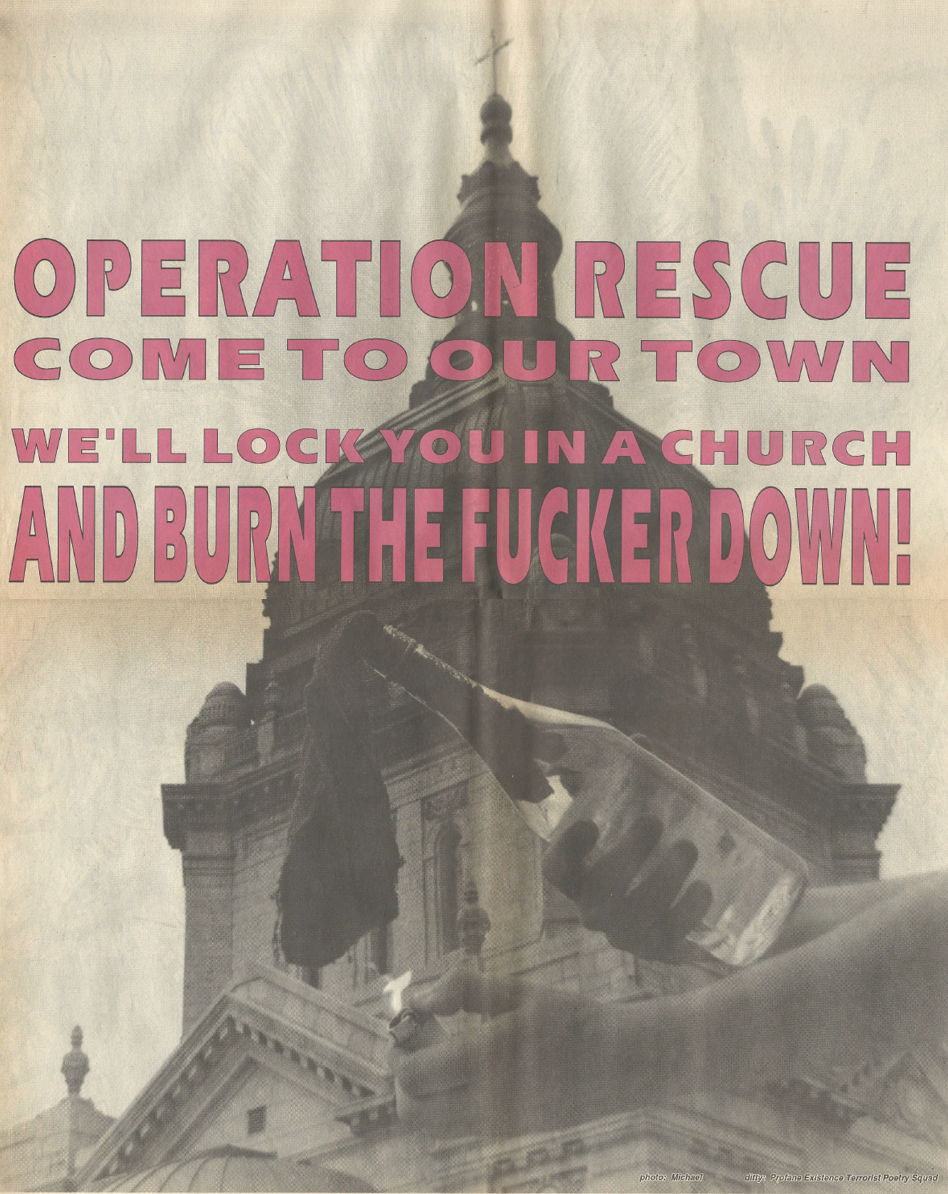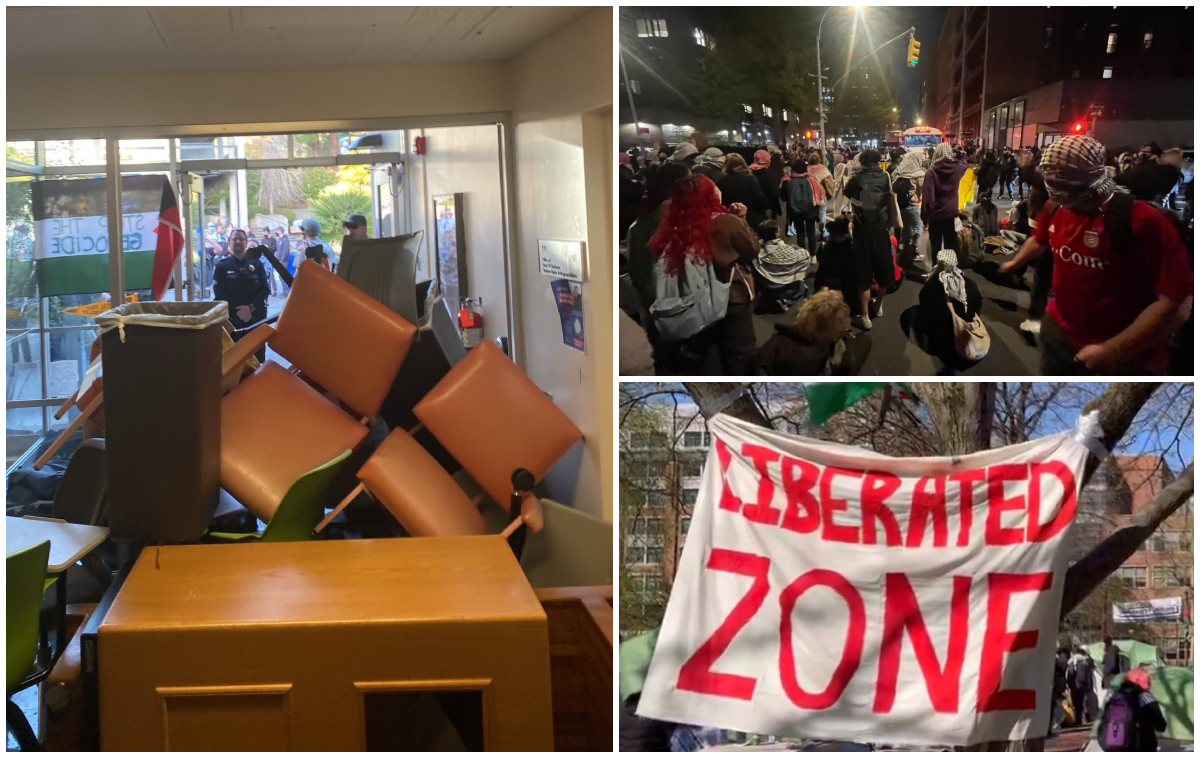Filed under: Analysis, Anarchist Movement, Anti-Patriarchy, Featured, Health Care, History, The State, White Supremacy

A historical look at how anarchists in the 1990s mobilized against attacks on reproductive freedom and autonomy by taking direct action and building autonomous infrastructure.
By Spencer Beswick
As the Supreme Court prepares to reverse Roe v. Wade under a Democratic president, house, and senate, it is clear that action at the ballot box is insufficient to protect abortion. Reproductive rights were not won by electoral means, and that is not how we will defend them.
Anarcha-feminist traditions of grassroots struggle and autonomous abortion infrastructure offer alternative strategies. As the anarcha-feminist Liz Highleyman put it in 1992, “the day when abortion is again made illegal may come sooner than we like to think. We must be ready to take our bodies and our lives into our own hands.”
Anarcha-feminists were on the front lines of the struggle for abortion throughout the 1980s and ‘90s. They were convinced that Roe v. Wade would not last forever and that they could not depend on the state and the legal system to protect reproductive freedom. Anarcha-feminists took a three-pronged approach to abortion struggle: defense of abortion clinics, construction of grassroots reproductive health infrastructure, and an anti-state approach to building feminist dual power.
Defense of Abortion Clinics
Anarcha-feminists physically protected abortion clinics from the likes of Operation Rescue, which was formed in 1986 to act as anti-abortion shock troops. They assaulted abortion clinics and supported bombings and assassinations of abortion providers using the slogan “if you believe abortion is murder, act like it’s murder.”
Broad feminist and queer coalitions mobilized against Operation Rescue. Anarcha-feminists introduced black bloc tactics and a willingness to engage in physical confrontation. They used these confrontational tactics to successfully protect clinics in NYC, Minneapolis, San Francisco, and across the country.
When Operation Rescue attempted to host a summer training camp in Minneapolis in 1993, anarchists physically confronted them, blocked them in their church, disrupted their meetings, vandalized their materials, protected clinics from their attacks, and generally made them unwelcome. Although some liberals opposed these tactics, anarchists and other militants handed Operation Rescue a major defeat and ran them out of town.
Reflecting on the experience, a local anarchist named Liza wrote that “it seems like no matter how hard activists fight, we rarely win. Except this time we were victorious. We fought against these fascists … We saw the demise of Operation Rescue in the Twin Cities, partly due to our unprecedented aggressiveness and opposition, and partly because their movement is losing, big time.”

Poster distributed by anarchists in Minneapolis (Profane Existence 1993)
Construction of Grassroots Reproductive Health Infrastructure
Anarcha-feminists established autonomous infrastructure and self-help groups in which people learned to take care of their own bodies and induce abortions on their own terms. As one anarchist put it in a 1991 article, “medicine is something we must take into our own hands. Because how can you smash the state if you’re still walking funny from a visit to the gynecologist’s?”
Threats to legal abortion produced an urgent need, as Highleyman wrote in 1992, to “rebuild the network of feminist women’s health and reproductive resources that existed in the late 1960’s and early 1970’s.” Anarchists called for the revival of groups like the Chicago Jane Collective that provided over ten thousand underground abortions before they were legalized. While anarcha-feminists supported abortions provided by accredited doctors, their focus on women’s autonomy led them to draw on alternative traditions of women-controlled health practices. This includes herbal and holistic methods which women have used “throughout the ages … to control their fertility and reproduction.”
Anarchists advocated expanding grassroots infrastructure and self-organization to gain the knowledge and skills necessary to perform their own reproductive care. They argued that this would produce true reproductive freedom and autonomy that was independent of the state and its laws.
Anti-State Approach to Building Feminist Dual Power
Anarcha-feminists did not appeal to the state to maintain abortion rights. They believed that the state was inherently patriarchal and was ultimately the enemy of reproductive justice. Thus, the Love and Rage Revolutionary Anarchist Federation (1989-98) argued in its draft political statement that “our freedom will not come through the passage of yet more laws but through the building of communities strong enough to defend themselves against anti-choice and anti-queer terror, rape, battery, child abuse and police harassment.”
Anarchists spread this analysis in the feminist movement, including by marching in blocs at reproductive justice demonstrations. In place of the slogan “we’re pro-choice and we vote,” anarcha-feminists often marched behind a banner reading “we’re pro-choice and we riot!”
Anarchists supported struggles to maintain legal abortion but argued that we must be ready to act on our own terms in the fight for bodily autonomy and self-determination. Establishing reproductive healthcare infrastructure is a key component of feminist dual power that challenges the hegemony of the state and capitalism. This kind of infrastructure prefigures—and concretely establishes—a world defined by mutual aid, solidarity, and autonomy.
As Sunshine Smith remarked in 1990, forming self-help medical groups and abortion infrastructure in the Bay Area “has, in very concrete ways, made our struggle against the anti-abortion group Operation ‘Rescue’ and the ‘Supreme’ Court stronger and more effective. We have learned that if the time comes, we can and will do home abortions. We are becoming physically aware of the invasion the government is conducting into our bodies. We are now able to repulse the state from our uteri because we are gaining the knowledge that enables us to control our own bodies.”





